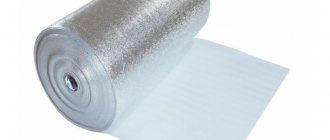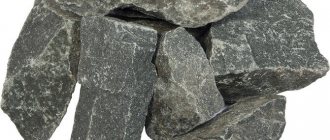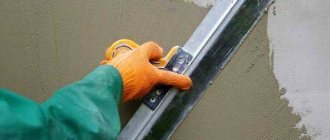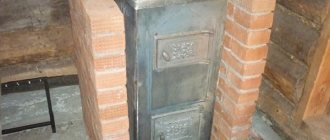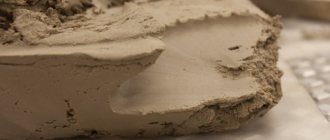The most popular and practical material, which has found its wide application in construction, repair, agriculture and everyday life, is slaked lime.
It is the main component of modern coatings, mixtures and solutions with high performance characteristics. Read more about how to properly slak and store lime, as well as for what purposes it can be used.
Purpose and benefits of slaked lime
Hydrated lime (also known as slaked lime) is a simple white powder that has a heavy base but is easily dissolved in water.
In fact, lime is the general name for all products/materials that come out during the firing process.
Slaked lime
There are several types of lime, which are classified according to slaking time:
- fast extinguishing . The process takes from 8-10 minutes, even large volumes are available;
Quick extinction
- medium extinction. The process lasts about 25 minutes;
- slow extinction. The entire process of extinguishing on average lasts more than half an hour.
Because slaked lime has a wide range of applications, it is also classified according to its hardening density. Here is its formula. Today there are two types of hardening:
- air curing. This type has found its application in construction. It is added to liquid construction mixtures in order to achieve the required density. It is often added to concrete. It is necessary to follow all recommendations, one of which is dry conditions, the presence of air;
- hydraulic type hardening . This hardening option is relevant in places where it is necessary to achieve maximum strength. This slaked lime is used in construction that takes place under water. For example, during the construction of underwater bridges, or when laying foundations for ports. Here are the proportions of cement for the foundation;
- There are two types of this type of hardening, different in the method of production: strongly hydraulic and weakly hydraulic.
The material has many characteristics and classes. Depending on the grind, it can be divided into three simple groups. Each of which has found its application:
- lumpy. This type of material is sold in tons, in bulk, and looks like flour or starch;
Komovaya
- crushed _ Such lime can be stored in bulk in warehouses. Sold in tons;
Crushed
- powdery /fine. They sell in fairly large quantities, as well as in small bags of several kilograms.
Powdery
Consumption rate
Autumn fertilizers for the garden and vegetable garden, what and how.
The required volume of the product depends on the purpose of its use. If there is a deficiency of the substance, it will not give the desired effect; if the dosage is clearly exceeded, the composition will harm the crops. When using a substance to reduce soil acidity parameters, its type must be taken into account:
- for heavy substrate and clay soil, 600-900 grams of product per 1 square meter is required;
- light soils, alumina and loam need 400-500 grams of the substance
- the lightest and sandiest soil requires the addition of 300-400 grams of lime.
The drug must be administered in stages. Its use includes the following stages:
Initial deposit. To do this, it is necessary to determine the soil acidity parameters. Optimal values depend on the crops grown. So, for pears and apple trees they should be 6.5%, for strawberries - 5.2%, for blackberries, raspberries, gooseberries - no more than 5.5%. Deoxidation is combined with digging up the beds. Re-entry. This is necessary when differences appear between the levels of acidification in different zones of the garden. The procedure is carried out in doses. This is only done in specific places
Particular attention should be paid to plants that are most affected by a decrease in calcium parameters in the soil.
Compliance with the timing of the next liming of the soil is of no small importance. At high acidity parameters, this must be done every 4 years.
With frequent processing, it is worth applying the composition at intervals of 3 years.
Expert opinion
Zarechny Maxim Valerievich
Agronomist with 12 years of experience. Our best country expert.
Ask a Question
Using the substance in the fall helps destroy weeds - wheatgrass, woodlice, horsetail. These plants actively develop in acidic substrate. To clear beds of unwanted vegetation, you should use 200 grams of lime per 1 square meter.
It is also permissible to use fluff to destroy wireworms, which severely damage root crops. Female pests lay eggs in acidic soil - this environment is considered the most favorable for them.
By reducing the acidity of the soil, it is possible to gradually clear the garden of parasites. To do this, it is worth adding 500 grams of the substance per 1 square meter of area. After using the product, the soil must be thoroughly moistened and dug up. After which the beds need to be watered again. It is also useful to use additional ash, adding 1 handful of the product to each hole with vegetable crops.
Production, standards according to GOST
Lime, aka fluff, has no distinctive features outwardly. It is a special white powder, most often of a fine fraction.
It’s interesting that when you start diluting lime with water, its volume almost doubles.
The density of the powder with which you can start working is 400 kg per cubic meter, while the humidity should be 5%. The fluff material is made very quickly, the main thing is to follow all the proportions and technology.
Fluffy
When it comes to lime (slaked) for use on a construction site, the process can take place both at the construction site itself and also in a factory.
In the quicklime state, lime should occupy 1/3 of the total volume, and water will be added in the same amount. Here is the formula for quicklime. All the remaining space in the container is needed so that the material can complete its cooking process.
In the very first minutes of combining the powder with water, a reaction begins, and the material increases in volume.
You need to know that if prepared lime is immediately mixed with concrete, its quality will not be very high. This is due to the fact that the material is a small percentage of the dry mixture, and if you do not wait a certain time, the lime slaking process will not be completed.
As a result, the material will not cope with its tasks. Absolutely every building material must comply with all rules and GOSTs.
Dry powdered lime is divided into several classes, and the difference lies in the amount of direct calcium and magnesium oxides in the material. For example, the best material is the highest grade, classified under the GOST 9179-77 standard, and has the following compound CaO + MgO, but in an amount of 90%.
GOST 9179-77
But in the second grade of such material, the CaO+MgO compound will be in a percentage ratio of 80%. Speaking about the types of material, the lower it is, the less water needs to be spent on its preparation. Which indicates that it contains a minimum of calcium and magnesium oxide.
For example, in the case of the fourth grade, the water necessary for the slaking reaction is taken in a proportion of 60% of the amount of dry lime.
The specific gravity of lime is 450-550 cubic meters. The price of the material is quite adequate - from about 3,000 rubles to 5,000 rubles per ton.
When to liming?
In the fall, fluff lime (use in the garden is described in the article) is added to the soil during digging in order to completely lim it.
Autumn digging (ploughing) of the soil is more preferable, especially when preparing early vegetables for sowing. It should begin immediately after harvesting and removing remnants of roots and tops. Fertilizers are evenly scattered on the site. The layers of soil should be turned over with a shovel so that the more dispersed top layer is at the bottom, and the structural bottom layer is on the surface. In autumn, it is not recommended to break clods and level the surface - this way the moisture in the ground is better preserved.
The main processing is carried out to a depth of 22-30 cm, for perennial vegetable crops - 35-40 cm.
Areas with a shallow arable layer require digging up the subsoil with the simultaneous application of lime and organic fertilizers:
- when digging, the fertile layer is removed, and the podzol (subsoil) is loosened to a depth of 1-2 cm;
- lime is added there (150 g/sq. m);
- the loosened layer is mixed with fertile soil;
- organic fertilizers are applied (8-10 kg/sq. m);
- the furrow is filled with the top layer of soil.
Carrying out annual loosening and fertilizing of the soil helps to increase the arable fertile layer.
Fluff lime is valued by knowledgeable owners. Application in the garden in spring is also possible. It is applied to the soil in small quantities under light digging, mainly for those crops that react especially painfully to the increased acidity of the soil: onions and garlic, lettuce, mustard, turnips, radishes, cabbage. The procedure is carried out a week before planting seedlings and sowing seeds.
In spring, it is very important to maintain soil moisture. Processing begins when the earth is still damp, but no longer sticks to the shovel, but is capable of crumbling into small lumps
How and where is lime used?
Each of us has come across such a material as slaked lime. Its scope of application is so diverse that it can even be found during the preparation of some dishes. But this is a rarer option.
Most often we encounter it at the dacha, at a construction site. Here we are talking not only about large construction projects, but also in private construction projects.
Application in construction
Slaked lime is used in construction in the following cases:
- The most common and well-known case is whitewashing walls and ceilings. Here about MDF for the ceiling;
Whitewashing walls and ceilings
- Lime can also be used to protect wooden buildings from fire and from rotting. To do this, it is enough to simply treat the object itself with diluted lime;
- slaked lime is used for connecting cement mortars. Here are the proportions of cement-lime mortar for plaster;
Connecting solution
- It can also be found when preparing silicate concrete. Here is the cement consumption per 1 cubic meter of concrete;
Silicate concrete
- This material is also used when installing the furnace, namely when laying its internal part. Here about the mortar for plastering the stove.
You need to understand that lime must be prepared according to a specific recipe.
It is the right technology that allows you to prepare the material correctly so that it fulfills all its tasks.
Can it be used and how is it used in gardening and gardening?
Slaked lime has found its application in gardening:
- lime takes part in the production of fertilizer , which is used in gardening and gardening;
Fertilizer
- garden _ A special solution is made from this material, which is used to whiten the beds in order to protect the plant from various kinds of diseases, as well as to protect the beds from parasites;
Sadovaya
- for whitewashing trees . This procedure not only guarantees protection for the tree bark, but also gives them a beautiful appearance.
Whitewashing trees
But this is not all where such material can be used. It can be used:
- in the process of tanning leather;
- lime is also added to connecting systems to clean waste pipes;
- It is interesting that lime is added to the production process of E 526, which in turn is used in the food industry;
- You can even find this material in dentistry. It has found its application in the simple disinfection of canals in the roots of teeth (canals).
Quite a lot of industries and spheres of human activity use it only in slaked form, but again, in order to get the desired result, it is necessary to distribute lime in the correct proportion.
Lime is also used in the process of disinfecting garden tools. The process is carried out only by fresh slaking of the material . The process is simple - the material is neutralized in a one to one ratio, after which it is allowed to dry, after which lime milk is prepared.
Read the material about bleach for disinfection.
Material preparation scheme:
- one kilogram of lime is one liter of water;
- let the material cool and dry;
- add more liters of water.
Such material can be used not only for disinfecting garden insurgents, but also for disinfecting premises.
For more information about using lime, watch the video:
Useful properties of fluff for the garden
Fluff has the following beneficial properties:
- protects plants from diseases;
- increases the adaptive properties of plants, helping to counteract various harmful factors;
- improves crop nutrition;
- retains nitrogen in the soil;
- accelerates the dissolution of various substances in liquid;
- accelerates the expansion of the plant's root system;
- promotes faster decomposition of organic compounds.
Thanks to fluff, it is possible to stabilize the top layer of soil and improve its chemical composition. In addition, the effects of toxic metals are neutralized.
Proportions for whitewashing walls during construction in a country house
When dry powder material and plain water are mixed, a certain chemical reaction is created, which in turn releases a large amount of heat.
To avoid unpleasant situations (eye contact, skin burns), you must follow all safety rules.
It doesn’t matter at all where the process of mixing the powder with water is carried out. At a factory or at a summer cottage, all work must be done in a special protective suit and gloves.
Whitewash in suit and gloves
Professionals recommend mixing materials in containers that are free from rust; it is best to choose a plastic container.
If you have a large volume, then it is better to take a large metal barrel. The work process is a simple manipulation that needs to be taken seriously.
The first thing to do is measure out the required amount of dry material and send it to the prepared container.
Next, pour cold water into the powder. It is best to add water not immediately, but in small portions and be sure to stir.
Preparation of the solution
The ideal situation is to leave the prepared lime to stand for a couple of hours, it is best to leave it alone for a couple of days.
If you are whitewashing the house, it is better to prepare the mixture in advance. The whitewashing process itself will cause nothing complicated. Just prepare the solution in advance . To make lime white, it is best to take first or second grade material and mix it with water in one to one proportions.
Before you start applying whitewash to the walls, you need to mix the solution thoroughly. Here's about plastering walls for wallpaper. Using a large brush, begin to coat the walls and ceiling.
Masters recommend starting the entire process from the upper left corner. You need to coat thoroughly, without leaving gaps.
As practice has shown, one layer is not enough, so whitewash can be applied in several layers. The process of whitewashing trees is essentially no different from whitewashing walls. Here about MDF for walls. Same solution, same brush. Speaking of treating plants, the solution needs to be sprayed over the entire area of the plants.
Use in everyday life
Some ways to use the material in the household:
- Preparation of safe fertilizers to reduce soil acidity and control various pests.
- Preparation of a preventive solution for whitewashing the trunks of garden and ornamental trees.
- Preparation of mixtures to protect plants from fungal diseases, insects and small rodents.
- Preparation of an active additive for feeding birds and animals.
- Reducing the hardness of drinking water from wells, boreholes and water supply.
- Disinfection and disinfection of various surfaces and wooden structures.
- Causticization of sodium or potassium carbonate.
- Neutralization of acidic compounds and organic-based acids.
- Tanning and processing of natural leather.
- Preparation of food supplements. The most common of them is an emulsifier (E526).
A unique material that has the following advantages: ease of preparation, shelf life, excellent disinfection characteristics, wide range of uses. And the process of slaking lime at home is quite easy to learn. Ready-made solutions are successfully used for agricultural work, household repairs, and the construction of residential and commercial buildings, which is primarily due to the low cost of consumable raw materials.
Safety precautions when working with lime mortar
As mentioned above, when working with such material, you need to be very careful and follow the instructions of professionals. This is because the material is considered caustic. Simple rules and recommendations will help you protect yourself from possible unpleasant situations:
- when working with such white powder material, you must wear safety glasses and gloves;
- When you pour water into the powder, the quenching process begins. It is best to maintain a distance from the container in which the extinguishing process takes place. This is due to the fact that when heating the water, it is possible that the solution will splash;
- Be sure to protect your respiratory system as well. This can be done using a cotton-gauze bandage;
- If lime gets on your skin, be sure to remove it with a cotton swab moistened with sunflower oil. A compress must be applied to the area affected by the solution. Water with 5% vinegar;
- If such a solution gets into your eye, immediately rinse it with plenty of warm water. If necessary, contact a specialist.
Determination of soil acidity
To determine acidity, a special device is used - a Ph meter. But ordinary summer residents are unlikely to have it. Litmus tests are more readily available. They do not give accurate indicators, but by color you can determine how acidified the soil is:
- blue tint of paper – calcareous soil – alkaline or slightly alkaline;
- green tint – neutral;
- beige color is characteristic of loams;
- red and its shades – the soil is acidic.
If you have nowhere to buy litmus paper or no time, then you need to go out into the garden and carefully examine the soil. If there is a gray-white coating, such as ash, then it is necessary to add lime to the soil in the fall or spring. The amount of lime fertilizers is calculated based on the degree of acidification.
Video: Whitewashing garden crops with lime
Find a low area in the garden where water usually accumulates and see what color it is. If it is brownish-rusty with a film, this also indicates an increased level of acid.
Lime is used for soil in the garden when weeds - dandelion, horsetail or mullein - begin to multiply there.
There is a popular method for determining the presence of acid - vinegar. A few drops of vinegar are poured onto the guest of the earth. If hissing occurs, but the soil does not change color, then there are enough carbonates in it. If the soil turns white and hisses, then you need to decide when and how best to apply lime to the soil - in autumn or spring.
Water purification
To purify water, bleach is used, which has high disinfection properties. Chlorination of water allows you to avoid outbreaks of intestinal infections and other epidemics.
Constant consumption of such water leads to allergic reactions and contributes to the formation of carcinogens in the body. In water, chlorine can combine with other substances, which affects the appearance of intoxications.
In order to reduce the effect of chlorine on the body, it is necessary to drink water that has been passed through carbon or other high-quality filters. At the same time, bleach is considered one of the most effective means; it prevents the occurrence of cholera and dysentery. Bleach must be used to disinfect wastewater.
Storage
Lump lime is stored in sheds with a wooden floor raised 30 cm above the ground. Water should not come into contact with the lime, as this can cause it to heat up and cause a fire.
In lime warehouses, extinguishing fires with water is prohibited.
The maximum shelf life of ground lime in paper bags is 25 days, in sealed containers (metal drums) - unlimited.
All materials presented on the site are for reference and informational purposes only and cannot be considered direct instructions for use. Each situation is individual and requires its own calculations, after which you need to select the necessary technologies.
Don't make rash decisions. Keep in mind that what has worked for others may not work for you.
The site administration and the authors of the articles are not responsible for any losses and consequences that may arise when using the site materials.
The site may contain content prohibited for viewing by persons under 18 years of age.
A material such as slaked lime has found its application both in construction and in gardening . There are two types of lime - slaked and unslaked. In the second option, the composition of the material is as follows: potassium, calcium and magnesium.
This simple composition repels various rodents and also regulates soil acidity; in construction, the material imparts viscosity to all liquid building materials. But this is only the minimum of what this material has.
Triple quotes
Notation of strings containing single and double quotes
We can use triple quotes (that is, three single quotes or three double quotes) to represent strings with single and double quotes to eliminate the need to escape any quotes.
>>> print("'She said, "Thank you! It's mine.""') She said, "Thank you! It's mine."
When a string begins or ends with a single (double) quote, and we want to use triple quotes to denote the string, we need to use ones that are different from the starting or ending quotes.
For example, for the string in the code above, using triple double quotes will result in a syntax error. Therefore, it is necessary to use triple single quotes.
>>> print("""She said, "Thank you! It's mine."""") File "", line 1 print("""She said, "Thank you! It's mine."""") ^ SyntaxError: EOL while scanning string literal
Multiline strings
Triple quotes are also used to represent a multiline string. Example:
>>> print("""Hello ... World ... !""") Hello World !
The same can be achieved by using the n character to create multiline strings. But this makes the line difficult to read. And using triple quotes allows you to write the string as it is.
>>> def multiple_line_comment(a, b): … »' … a is a string # other additional description … b is a list of integers # other additional description … »' … pass … >>> print(multiple_line_comment.__doc__) a is a string # other additional description b is a list of integers # other additional description
We can immediately see what is a multi-line comment for the function.
Hardening
Lime hardens in air with the simultaneous occurrence of two processes: crystallization of Ca(OH)2 from a saturated aqueous solution and carbonization of CaCO3. The hardening process of lime can be accelerated by drying.
After 28 days of air hardening, samples of building lime mortars reach their ultimate compressive strength:
| on slaked lime | 0.5-1 MPa |
| on quicklime powder | up to 4-5 MPa |
| with autoclave hardening | 30-30 MPa and more |
Lime paste consists of a saturated aqueous solution of Ca(OH)2 and tiny undissolved lime particles. As water evaporates from it, a supersaturated solution of Ca(OH)2 is formed, from which crystals precipitate, increasing the content of the solid phase.
In this case, shrinkage of the hardening system occurs, which under certain conditions (for example, when hardening a lime mixture on a rigid base - a plaster layer) can cause cracking of the material.
Therefore, lime is always used with fillers (for example, lime-sand mortars) or in a mixture with other binders to impart plasticity to the material.
Lime dough, protected from drying out, retains plasticity indefinitely, i.e. such lime “absent” the setting process. Hardened lime dough, when moistened, again turns into a plastic state (lime is not a waterproof material).
However, with prolonged hardening (decades), lime acquires quite high strength and relative water resistance (for example, in the masonry of old buildings). This is explained by the fact that: in air, lime reacts with carbon dioxide, forming calcium carbonate, which is insoluble in water and quite strong, i.e., it turns back into limestone
This process is very long, and complete carbonization of lime practically does not occur.
Reaction with silicates
There is an opinion that with prolonged contact of lime with quartz sand in the presence of moisture, interaction occurs between these components with the formation of a contact layer of hydrosilicates.
This also increases the strength and water resistance of concrete and lime-based brickwork that are more than 200-300 years old.
Component ratio
In order to prepare a 5% chlorine solution, you will need five liters of clean water and a 10% clarified mother solution. For a 3% composition, seven liters of liquid are required, for 2% - 8 liters, and in order to prepare a 1% solution - at least nine liters of water. Accordingly, if concentration is required in a 0.1% solution - 9.9 liters of water, for 0.2% - 9.8, and for 0.5% - 9.5 liters of liquid.
These working compositions are obtained from a mother liquor of bleach. If chloramine is used as the starting material, then the concentration of substances will be as follows: for a 4% solution you will need half a kilogram of powder per ten liters of water, for 3% - three hundred grams and 2% - two hundred. Accordingly, to prepare a mother solution at a concentration of 0.2% you will need 20 g of powder, 0.5% - 50 g and 1% - one hundred grams.
Next, in order to make the solution necessary for processing from this composition, you will need a separate container and clean water. To prepare 4% chloramine you will need fifty grams of the composition per 950 ml of water, and for 1% - ten grams. Accordingly, 0.2% is two grams.
Best before date
Different categories of lime have different shelf life. For example, if you take quicklime, it should be stored for about two weeks in a room that will be exclusively unheated, dry and closed. If it is possible to store it in production conditions, then it is better to do this in special containers that have a feeding system.
If such a product is stored in sealed packaging, then its shelf life is unlimited. It must be said here that the storage of this type of lime must completely prevent any liquid from coming into contact with it, otherwise this can cause the substance to become very hot.
After dehydration has been carried out, the lime must be kept in a specially created pit for about half a month in case it will be used for masonry or to create some kind of solutions. If it is used for plastering, it should be stored for about a month.
Afterwards, a 20-centimeter layer of fine sand is usually poured onto the solution. If the temperature outside is sub-zero, to eliminate the possibility of freezing, you can also add a 70-centimeter layer of earth onto the sand. Also, the pit with lime should be fenced off and marked so that everyone around them knows about its presence and animals cannot get into it. As a rule, such lime is stored in the dough consistency for quite a long time. And the more time passes, the better quality it becomes.
Bleach is usually stored exclusively in sealed containers in a place that is completely protected from moisture and ultraviolet rays. The packaging must be marked to indicate that the substance is caustic. It is packaged in polypropylene or polyethylene bags, as well as in steel drums with polyethylene liners. On the market these will be packages weighing 0.5, 1.2 and 1.5 kilograms. The pack may be sealed, or may be tied with a metal ring or chlorine-resistant twine.
If we talk about the severity of the impact on humans, then substances such as lime are included in the group of moderately hazardous products of the third group, and the released chlorine is in the second group.
The decomposition of chlorine-based lime entails the release of oxygen and chlorine. But this is only possible under the influence of natural factors. It is a strong oxidizing agent, and chlorine dust can cause irritation of the mucous membrane.
When working with such a substance, you should protect your respiratory system and eyes with special equipment - a respirator or a filter-type gas mask. Packages of this type can be stored in warehouses with a high-quality ventilation system, which are unheated and protect the lime from ultraviolet rays. Floors must be made of brick, concrete or asphalt. Gas cylinders, flammable materials, and various explosives must not be stored in a room containing such substances. The shelf life in warehouses can be either a year or three years.
By the way, storage facilities must be equipped with fire extinguishing devices: acid-based fire extinguishers, taps with fire hoses, boxes filled with sand, and so on.



